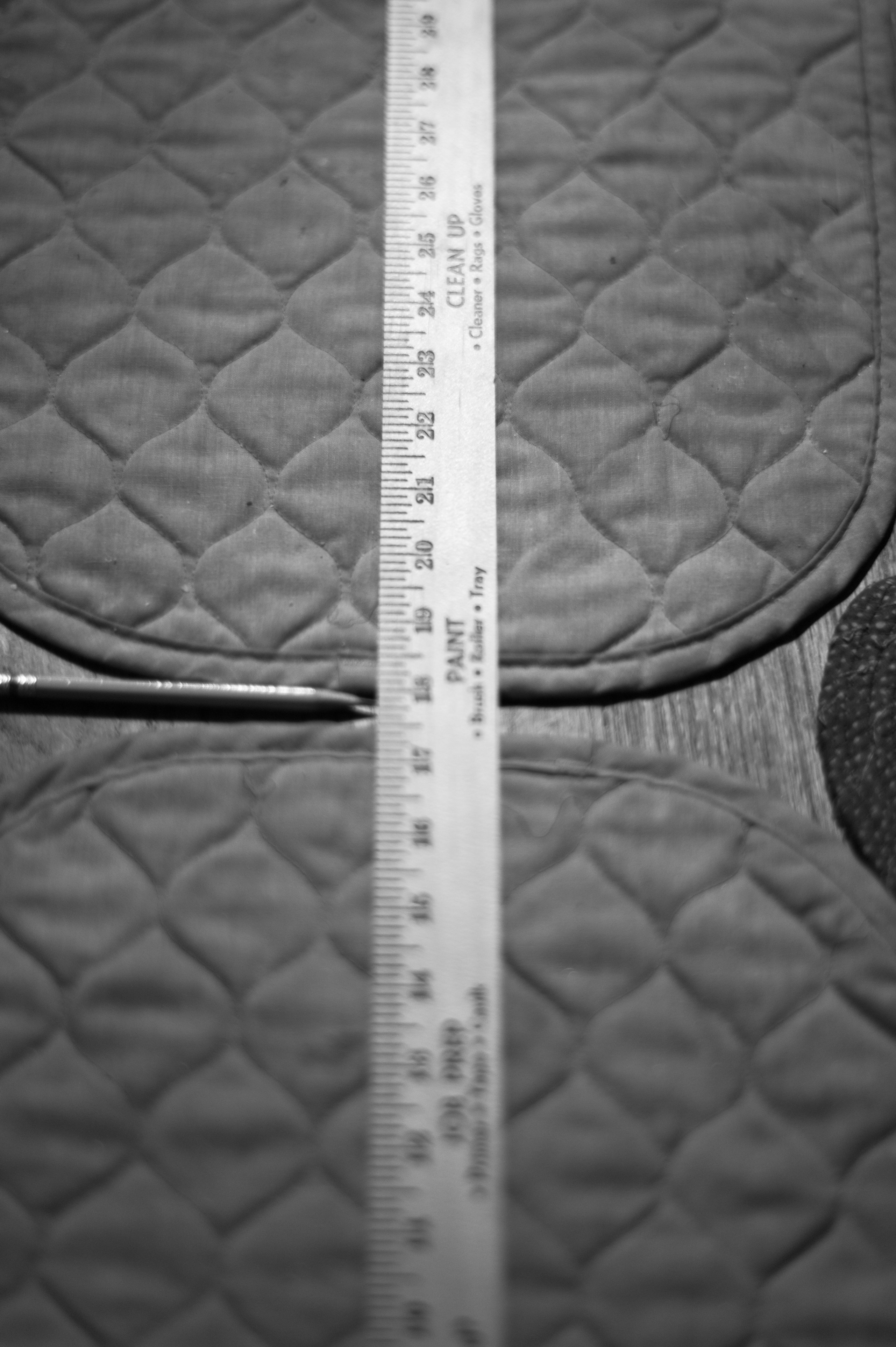x-ray
Mentor
“You can paint with this lens”? It’s a nice lens but I wouldn’t say there’s any magic to it.
It’s a lot like the 85mm f1.2 L I owned for my Canon digital. They both have similar qualities wide open. I really liked the Canon a little better optically but the 75 is very close in character. With a reflex camera I feel a bit more connected with my subject vs a little window in a rangefinder although the RF viewing never prevented me from making a good shot. You just live with it and make images. One thing, I like the working distance a bit better with the 75 though. It’s enough distance to keep the subject from feeling crowded but short enough to have a connection to your subject.
I was trying to remember when I bought mine. I guessing over 30 years and never had an issue after thousands of images.
Here are 3 images from the Canon 85 1.2L on a Canon 1Ds shot about 20 years ago. Shots were made at f1.2.
It’s a lot like the 85mm f1.2 L I owned for my Canon digital. They both have similar qualities wide open. I really liked the Canon a little better optically but the 75 is very close in character. With a reflex camera I feel a bit more connected with my subject vs a little window in a rangefinder although the RF viewing never prevented me from making a good shot. You just live with it and make images. One thing, I like the working distance a bit better with the 75 though. It’s enough distance to keep the subject from feeling crowded but short enough to have a connection to your subject.
I was trying to remember when I bought mine. I guessing over 30 years and never had an issue after thousands of images.
Here are 3 images from the Canon 85 1.2L on a Canon 1Ds shot about 20 years ago. Shots were made at f1.2.
Attachments
raid
Dad Photographer
I am also using a Canon 85mm/1.2L. It gives a different look than the Summilux 75mm/1.4.
Your three images are sharp and beautiful.
As for being magical
Shooting with the Leica 75 Summilux f/1.4 Lens on the Leica M9P
by Steve Huff: "On the Leica M9 it is magical "
The 75mm summilux is certainly not as sharp wide-open as Leica’s newest line-up of aspherical low-light superstars, but the lens should be prized for providing a brilliant combination of softness, sharpness, light gathering and color rendition. If you like to shoot with fast lenses, the 75mm summilux is a fine-art dream. Wide-open, it provides just the right amount of softness and shallow depth of field for portraits and painterly landscapes. Stop the lens down a few notches, and it’ll perform at a level that is close to the newer aspherical designs
Your three images are sharp and beautiful.
As for being magical
Shooting with the Leica 75 Summilux f/1.4 Lens on the Leica M9P
by Steve Huff: "On the Leica M9 it is magical "
The 75mm summilux is certainly not as sharp wide-open as Leica’s newest line-up of aspherical low-light superstars, but the lens should be prized for providing a brilliant combination of softness, sharpness, light gathering and color rendition. If you like to shoot with fast lenses, the 75mm summilux is a fine-art dream. Wide-open, it provides just the right amount of softness and shallow depth of field for portraits and painterly landscapes. Stop the lens down a few notches, and it’ll perform at a level that is close to the newer aspherical designs
Last edited:
Freakscene
Obscure member
Unless it was the sale of the century, I would send it back. Replace it with one that works.
The main problem is that the 75 is discontinued and Leica are out of several parts. If you ask for a partial refund and it can’t be fixed, you are left with a dud Because the return window will have closed and you’ve already accepted a partial refund assuming it can be repaired.
The other problem is that if it is just out of adjustment it is an easy and inexpensive fix (I think DAG charged me $125 in 2018) but if it needs a major repair it might cost a lot more.
I have had sell a 75 Summilux that worked only at f1.4 - but I dropped it and it was my fault. I got a surprisingly good price for it, but it is best to not have to contemplate this.
Marty
The main problem is that the 75 is discontinued and Leica are out of several parts. If you ask for a partial refund and it can’t be fixed, you are left with a dud Because the return window will have closed and you’ve already accepted a partial refund assuming it can be repaired.
The other problem is that if it is just out of adjustment it is an easy and inexpensive fix (I think DAG charged me $125 in 2018) but if it needs a major repair it might cost a lot more.
I have had sell a 75 Summilux that worked only at f1.4 - but I dropped it and it was my fault. I got a surprisingly good price for it, but it is best to not have to contemplate this.
Marty
raid
Dad Photographer
One possible chat to have with the seller:
Lower selling price by $300 to be used with services by Don Goldberg.
If he concludes that this lens is a lemon, we split the $300, and I send you back the lens.
If he can fix it well for $300, I will keep the lens.
Oh well. It is just a made-up chat.
Lower selling price by $300 to be used with services by Don Goldberg.
If he concludes that this lens is a lemon, we split the $300, and I send you back the lens.
If he can fix it well for $300, I will keep the lens.
Oh well. It is just a made-up chat.
Freakscene
Obscure member
One possible chat to have with the seller:
Lower selling price by $300 to be used with services by Don Goldberg.
If he concludes that this lens is a lemon, we split the $300, and I send you back the lens.
If he can fix it well for $300, I will keep the lens.
Oh well. It is just a made-up chat.
The problem with an arrangement like that, even if the seller agrees, is that you need to trust someone you don’t know. And you can end up losing out on a pretty expensive item. I like to work through what I can get enforced by eBay or PayPal, or work with a retailer like KEH who fixes things for you if they don’t work.
Marty
x-ray
Mentor
Writers tend to get a little carried away with their words to draw their audience in. I just don’t get into the mystique around equipment. It is what it is and nothing more. It’s what each of us make it out to be through our photos not our words.
raid
Dad Photographer
Well said, x-ray. Still, I believe that this is a special lens.
Last edited:
Freakscene
Obscure member

Brunswick St Fortitude Valley, Brisbane. 75/1.4, f2, TMZ @ 1000, Xtol 1+1.
f.hayek
Well-known
Send it back for a refund and find another. There are many out there.
Rob-F
Likes Leicas
Thanks for the support and the variety of perspectives. It's probably not "the sale of the century" (as Freakscene suspects). Let's see: With the tax, it was $3,003.69. The seller is offering me $400 if I keep it. How does that sound? Part of me wants it, especially if that's a good price. Part of me would like to avoid any further headaches. So I will sleep on it. Then I will look for any more of you comments in the morning and see if I'm ready to decide. Thanks, Y'all!
brusby
Well-known
I'd want to analyze the nature and severity of the problem a bit more closely before deciding. A few thoughts:
1) You mentioned the helicoid being assembled improperly. I think that's highly unlikely because the lens wouldn't line up and stop at infinity, plus it would be so out of focus that even stopping down to f5.6 wouldn't give a sharp image. But you said it was sharp at f5.6.
2) I'd want to find out if the lens is sharp wide open when focused correctly. Best way to do this is on a camera with live view. I'd put it on a tripod to eliminate camera shake as a factor and focus via live view on a few different objects at different distances -- close, medium and far. Make sure to include something at infinity or at least a couple hundred yards away. If it is sharp when focused wide open with live view, it likely means collimation is off. If it isn't sharp this way it indicates a more serious problem, most likely an element in backwards.
3) If it's simply back focusing or front focusing pretty badly, that isn't too unusual and could probably be fixed easily by Don with a collimation. Being sharp at f5.6 is consistent with this issue. It means things are out of focus but not too far that they can't be brought into focus by stopping down a few stops. I'm sure you know how to test for this but I'll elaborate for anyone new to the process: Put the rangefinder with lens on a tripod and lay a ruler on the floor running to and from the camera. Focus on a number and then see if the actual point of focus is in front of behind your intended point of focus. As an alternative, and my preferred method, find some rough concrete, put an object on it and shoot that. You'll see a sharp band of concrete at the actual focus point.
4) This is the method I use to check almost all my rangefinder lenses: Put the camera on a tripod, focus via the rangefinder at a pinpoint of light (like a bright reflection off of jewelry or silverware) or clear vertical line, then examine focus via live view. If collimation is off the live view image will be out of focus. Then, in live view, turn the lens focus until the object comes into clear focus; now check your rangefinder patch to see how far off it is.
Good luck!
1) You mentioned the helicoid being assembled improperly. I think that's highly unlikely because the lens wouldn't line up and stop at infinity, plus it would be so out of focus that even stopping down to f5.6 wouldn't give a sharp image. But you said it was sharp at f5.6.
2) I'd want to find out if the lens is sharp wide open when focused correctly. Best way to do this is on a camera with live view. I'd put it on a tripod to eliminate camera shake as a factor and focus via live view on a few different objects at different distances -- close, medium and far. Make sure to include something at infinity or at least a couple hundred yards away. If it is sharp when focused wide open with live view, it likely means collimation is off. If it isn't sharp this way it indicates a more serious problem, most likely an element in backwards.
3) If it's simply back focusing or front focusing pretty badly, that isn't too unusual and could probably be fixed easily by Don with a collimation. Being sharp at f5.6 is consistent with this issue. It means things are out of focus but not too far that they can't be brought into focus by stopping down a few stops. I'm sure you know how to test for this but I'll elaborate for anyone new to the process: Put the rangefinder with lens on a tripod and lay a ruler on the floor running to and from the camera. Focus on a number and then see if the actual point of focus is in front of behind your intended point of focus. As an alternative, and my preferred method, find some rough concrete, put an object on it and shoot that. You'll see a sharp band of concrete at the actual focus point.
4) This is the method I use to check almost all my rangefinder lenses: Put the camera on a tripod, focus via the rangefinder at a pinpoint of light (like a bright reflection off of jewelry or silverware) or clear vertical line, then examine focus via live view. If collimation is off the live view image will be out of focus. Then, in live view, turn the lens focus until the object comes into clear focus; now check your rangefinder patch to see how far off it is.
Good luck!
Last edited:
Ray Vonn 2023
Established
I read threads like this and my usual thought is "what does @Sonnar Brian think of this lens?".
f.hayek
Well-known
....not a Sonnar design so he might be agnostic.
raid
Dad Photographer
Brian knows how to fix most lenses. I have no idea what to do with a lens that needs adjustments.
Rob-F
Likes Leicas
I did the trick of photographing my yardstick. Point of focus is at 18 inches where the pencil is pointing. So, best point of focus is, what would you say, maybe at 22 inches further away from my point of focus. So the Summilux is back-focusing by some four inches or so at this distance. So if I just send it off to DAG, he should be able to fix it easily, right? No real risk in keeping the lens and accepting a $400 refund?


Mackinaw
Think Different
I never knew this and it explains why my 75/1.4 was always a bit out of focus wide-open when used on one of my Leica film cameras. I learned how to compensate (turn the focusing ring a bit), but, as you state, with digital and live view, this is no longer a big deal........If properly set up, your 75/1.4 should very slightly front focus wide open close up. If you get it adjusted so that it is dead on, focus shift becomes much more challenging stopped down and close up.
I started writing a long technical post about “the real cost of owning a Leica” that looked at this sort of thing, but then live view sort-of saved me. If things are out of spec now, it matters less, for me anyway.
Marty
Jim B.
Freakscene
Obscure member
It’s focusing about 4 inches behind the focus point. Interesting. I’d say it’s most likely that it’s out of spec, but there are no guarantees.
Pack it well when you send it, whether that is back to the seller or to DAG. The aperture mechanism is partly plastic and glued together and sensitive to knocks. They are all like that by the way.
Marty
Pack it well when you send it, whether that is back to the seller or to DAG. The aperture mechanism is partly plastic and glued together and sensitive to knocks. They are all like that by the way.
Marty
Can you post an image of the back of the lens? From what I see online- the first type lens uses a "tongue" type RF Cam, later types uses a rotating indexed cam. The simple fix for back-focus with the tongue type - I use one layer of copper tape, or on a severe case- two layers. I had to do this for the Nokton 50/1.1 and Nokton 35/1.2 V1 that were optimized for the Voigtlander film cameras when using on my M9.I did the trick of photographing my yardstick. Point of focus is at 18 inches where the pencil is pointing. So, best point of focus is, what would you say, maybe at 22 inches further away from my point of focus. So the Summilux is back-focusing by some four inches or so at this distance. So if I just send it off to DAG, he should be able to fix it easily, right? No real risk in keeping the lens and accepting a $400 refund?

The second test- do the same type focus test over the full range, close-up as you have done, at 5m, and out to 20m. If the back-focus disappears and becomes a front focus, the focal length of the lens is off. If the error is a continuous back-focus, building up the Cam will work.
$400 discount. If the back focus is consistent and repeatable- then the problem should be easily correctable. If it is not repeatable, and varies with distance and the angle that the lens is held- might be a loose optic or sloppy helical. The latter- with the lens on the camera, work the focus and push down on the lens. If the RF image is affected by pushing down slightly on the lens, the helical is worn. I've seen all of these problems affect focus of a lens. 50/1.5 Asph Nokton- focused propery when held level or pointed up. Lost focus when pointed down. One of the inner retaining rings was not properly tightened down. Worn Helical- Leica Elmar, Wartime LTM Sonnar, and Many J-8 and J-3. Vacuum Pump Grease.
On vacation this week- my Daughter is on Spring Break. But will check in...
Last edited:
brusby
Well-known
That helps a lot. On one hand, it is decently sharp at the point of focus, which indicates it's not totally screwed up. OTOH, it's a pretty substantial back focus, and a bit more than I typically see with most lens I've fiddled with that are otherwise ok, so something is amiss.I did the trick of photographing my yardstick. Point of focus is at 18 inches where the pencil is pointing. So, best point of focus is, what would you say, maybe at 22 inches further away from my point of focus. So the Summilux is back-focusing by some four inches or so at this distance. So if I just send it off to DAG, he should be able to fix it easily, right? No real risk in keeping the lens and accepting a $400 refund?
I'd send that image to Don and ask his opinion. He's the most knowledgable person I'm aware of regarding those lenses and one of very few who has first hand experience collimating them to correct for precisely that kind of error. I think that is vitally important because he should know better than almost anyone else how far he can bring it back into adjustment with the methods available to him. For many of the rest of us, that would be just a guess, and I'd want more certainty than that. Plus Brian has identified some other potential problems that Don could likely fix if it turns out that one or several of them are the cause. Don might be willing to give it a quick inspection to rule out catastrophic problems so you could make a decision right away.
p.s., In the past I've solved a similar problem by sending the lens to Don with the seller agreeing to pay the quick inspection fee for Don to check the lens out -- the exact $ amount for Don's charge worked out with him and the seller in advance -- and the further agreement that I could buy or return the lens at my discretion after considering Don's findings.
Last edited:
Freakscene
Obscure member
I never knew this and it explains why my 75/1.4 was always a bit out of focus wide-open when used on one of my Leica film cameras. I learned how to compensate (turn the focusing ring a bit), but, as you state, with digital and live view, this is no longer a big deal.
Jim B.
Live view is a really great development.
The front focus thing annoyed and baffled me enough that I hassled Leica until someone responded. That was before I knew much about optics, but it made perfect sense. I’d seen focus shift in my 50/1.
Can you post an image of the back of the lens? From what I see online- the first type lens uses a "tongue" type RF Cam, later types uses a rotating indexed cam. The simple fix for back-focus with the tongue type - I use one layer of copper tape, or on a severe case- two layers. I had to do this for the Nokton 50/1.1 and Nokton 35/1.2 V1 that were optimized for the Voigtlander film cameras when using on my M9.
The second test- do the same type focus test over the full range, close-up as you have done, at 5m, and out to 20m. If the back-focus disappears and becomes a front focus, the focal length of the lens is off. If the error is a continuous back-focus, building up the Cam will work.
$400 discount. If the back focus is consistent and repeatable- then the problem should be easily correctable. If it is not repeatable, and varies with distance and the angle that the lens is held- might be a loose optic or sloppy helical. The latter- with the lens on the camera, work the focus and push down on the lens. If the RF image is affected by pushing down slightly on the lens, the helical is worn. I've seen all of these problems affect focus of a lens. 50/1.5 Asph Nokton- focused propery when held level or pointed up. Lost focus when pointed down. One of the inner retaining rings was not properly tightened down. Worn Helical- Leica Elmar, Wartime LTM Sonnar, and Many J-8 and J-3. Vacuum Pump Grease.
On vacation this week- my Daughter is on Spring Break. But will check in...
With the newer design with the collar type cam (thank you Brian, didn’t know what it was called and my father only knew in German) the tape trick may not work because the usual problem is that the collar loosens. This is why the 75 Summilux often needs frequent servicing to work with the rangefinder. Another reason to hope for an M with the CL digital finder, or similar.
@Rob-F shoots film, if I recall correctly, otherwise I would say ‘check it with live view’.
Enjoy spring break Brian.
Marty
Share:
-
This site uses cookies to help personalise content, tailor your experience and to keep you logged in if you register.
By continuing to use this site, you are consenting to our use of cookies.




